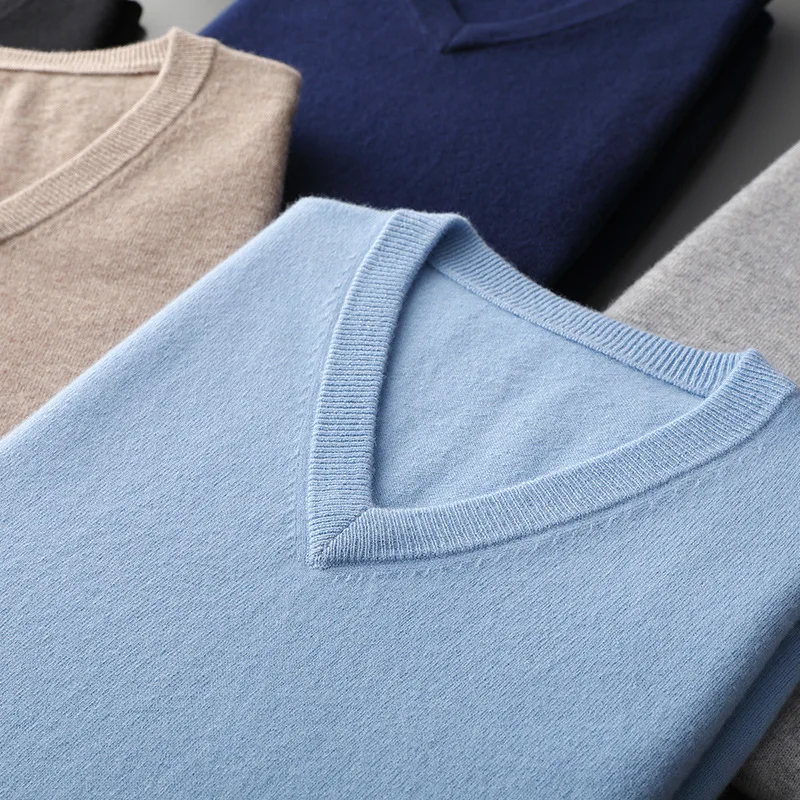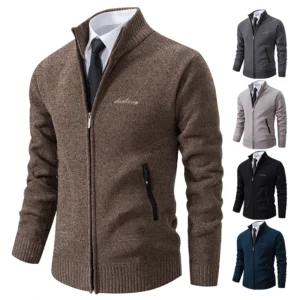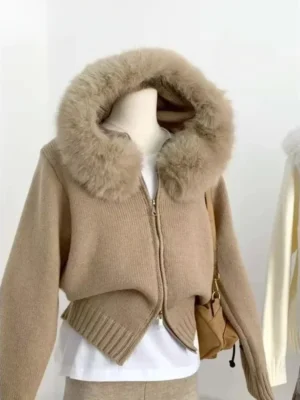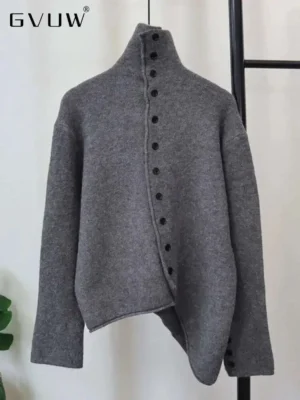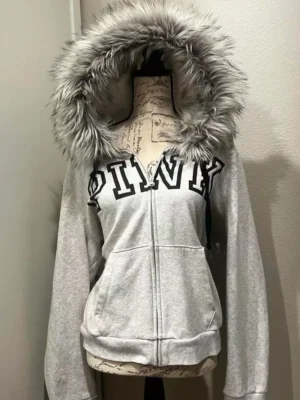What Makes Cashmere So Special? The Foundation of Luxury
Cashmere stands as one of nature’s most luxurious treasures—a premium natural fiber harvested specifically from the soft undercoat of cashmere goats. What truly sets cashmere apart is its remarkable rarity. Each goat produces only 150-200 grams of usable cashmere annually, making it one of the most precious natural fibers in the world. This limited supply contributes significantly to both its prestige and price point.
For centuries, cashmere has been revered as the epitome of luxury in textiles. Originally worn by royalty and nobility, this exquisite material has maintained its status as a symbol of refined taste and quality across generations. The journey from goat to garment involves meticulous collection, sorting, and processing—each step carefully executed to preserve the fiber’s exceptional properties.
When we discuss cashmere cardigans as investment pieces, we’re acknowledging their potential to deliver value beyond their initial cost. Unlike fast fashion items that quickly lose their appeal or functionality, quality cashmere garments can become wardrobe cornerstones for decades. This longevity factor is a crucial component when evaluating whether something is truly “worth it.”
The framework for determining a cashmere cardigan’s value extends beyond simple monetary calculations to include factors like durability, comfort, versatility, and timeless appeal. Global cashmere production represents less than 0.5% of the total wool market—a statistic that underscores its exclusivity and helps explain its premium positioning in the fashion world.
Understanding the origins and quality of cashmere provides essential context for appreciating its unique place in the textile hierarchy and sets the foundation for exploring whether these luxurious garments merit their investment status.
The Unique Properties of Cashmere Explained
Cashmere’s exceptional reputation stems from its remarkable physical structure. Unlike ordinary wool fibers, cashmere fibers feature a unique hollow core that creates natural insulation. This distinctive architecture allows cashmere to trap body heat with remarkable efficiency while maintaining exceptional lightness.
What truly distinguishes premium cashmere is its incredibly fine diameter. High-quality cashmere fibers typically measure between 14-16 microns in thickness, significantly finer than regular wool fibers that range from 20-40 microns. For perspective, a human hair averages about 75 microns in diameter. This extreme fineness directly translates to cashmere’s legendary softness—the finer the fiber, the softer the feel against the skin.
The harvesting process further contributes to cashmere’s quality. Rather than being sheared like sheep’s wool, cashmere is collected during the natural molting season when cashmere goats shed their winter undercoat. This gentle collection method, followed by meticulous sorting and processing, preserves the integrity of these precious fibers.
Key properties that make cashmere extraordinary include:
- Unparalleled softness – The extremely fine fibers create a silky, luxurious texture that gets even softer with proper wear and care
- Superior warmth-to-weight ratio – Cashmere provides 3-8 times more insulation than regular wool despite being significantly lighter
- Natural breathability – The fibers allow air circulation and moisture wicking, preventing overheating
- Lightweight comfort – Premium cashmere feels virtually weightless yet provides exceptional warmth
- Hypoallergenic qualities – The absence of lanolin makes cashmere suitable for most sensitive skin types
- Temperature regulation – Cashmere adapts remarkably to body temperature, providing warmth in cold conditions while preventing overheating
These exceptional properties explain why cashmere wool cardigans command premium prices and why many consider them the ultimate in comfort and luxury. The natural properties of the fiber create a wearing experience that synthetic materials simply cannot replicate, regardless of technological advances.
The Compelling Benefits of Cashmere Cardigans
Unmatched Comfort Experience
The luxurious feel of cashmere against the skin creates a sensory experience that few other materials can match. Unlike traditional wool that often causes itchiness or irritation, cashmere feels remarkably soft from the first wear. What many cashmere enthusiasts particularly value is how this comfort actually improves over time—with proper care, cashmere garments become increasingly soft with each wear.
This exceptional comfort doesn’t come at the expense of functionality. Cashmere adapts beautifully to your body temperature, providing comfort across a surprising range of conditions. This adaptability makes it ideal for unpredictable weather transitions or environments with fluctuating temperatures.
Superior Thermal Properties
The science behind cashmere’s warmth lies in its unique fiber structure. Each hollow cashmere fiber traps an exceptional amount of air, creating natural insulation that maintains body heat with remarkable efficiency. This unique architecture means cashmere provides approximately three to eight times more insulation than regular sheep’s wool, despite being significantly lighter in weight.
This exceptional warmth-to-weight ratio translates to practical benefits for everyday wear. A quality cashmere cardigan delivers substantial warmth without the bulkiness of heavier materials, allowing for comfortable layering without restricted movement or added visual weight.
Versatility in Style and Function
Few garments transition as effortlessly between casual and formal settings as the cashmere cardigan. This chameleon-like versatility makes cashmere cardigans particularly valuable for travel or busy lifestyles where packing light or quick outfit changes are necessary.
The styling options for cashmere cardigans are virtually endless. They pair beautifully with everything from tailored trousers and skirts to casual jeans or even over dresses. This adaptability extends across seasons as well—cashmere works perfectly for light layering in spring and fall, while providing essential warmth in winter. The material’s natural temperature regulation means you can wear cashmere in unpredictable weather with confidence.

Longevity and Value Over Time
High-quality cashmere represents a different approach to clothing economics. While the initial investment might be higher, premium cashmere garments can last for decades with proper care. This longevity dramatically reduces the “cost per wear” calculation that savvy shoppers consider when evaluating higher-priced items.
A well-made cashmere cardigan maintains its appearance and performance characteristics far longer than lower-quality alternatives. This resilience makes cashmere particularly valuable in a world increasingly concerned about fast fashion and sustainability.
Timeless Appeal
Fashion trends come and go with increasing speed, but cashmere cardigans remain perpetually relevant. Their classic silhouette and luxurious texture transcend seasonal fads, making them reliable wardrobe foundations year after year. This enduring style value is particularly important when considering investment garments.
The versatility of women’s cashmere cardigans extends beyond their styling potential to their remarkable resilience against fashion obsolescence. While colors and specific details may evolve, the fundamental appeal of a quality cashmere cardigan remains constant across decades.
Gentle on Sensitive Skin
Cashmere contains significantly less lanolin than regular wool, making it naturally more compatible with sensitive skin. Many people who cannot tolerate wool find that cashmere causes no irritation or allergic reactions. This hypoallergenic quality adds another dimension of value, particularly for those with skin sensitivities.
Important Considerations Before Investing
Premium Price Point
Quality cashmere comes with a significant price tag that reflects its rarity and the labor-intensive processes required for its production. Premium cashmere cardigans typically range from $150 to well over $1,000, depending on factors like fiber quality, construction complexity, and brand positioning.
This price premium stems from multiple factors. The limited supply of raw material (each goat produces only a small amount annually), combined with the time-intensive sorting and processing required, establishes a high baseline cost. Additionally, careful manufacturing techniques needed to preserve cashmere’s quality further increase production expenses.
Understanding these cost drivers helps contextualize cashmere’s premium positioning. While cheaper cashmere options exist, they often involve compromises in fiber quality or construction that ultimately undermine the very properties that make cashmere desirable.
Specialized Care Requirements
Cashmere’s luxury status extends to its care needs. Unlike more resilient fibers, cashmere requires thoughtful maintenance to preserve its quality over time. Hand washing with gentle detergents or professional cleaning is typically recommended over machine washing. Additionally, proper drying techniques—laying flat rather than hanging—are essential to maintain the garment’s shape.
Storage considerations are equally important. Cashmere attracts moths, making protective storage solutions necessary during off-seasons. Understanding why cashmere pills and how to fix it is also crucial for maintaining your garment’s appearance over time.
While these care requirements might initially seem demanding, they become simple habits for most cashmere owners. The effort invested in proper maintenance directly contributes to the longevity that makes cashmere economical over time.
Quality Variations in the Market
Not all cashmere is created equal. The market contains significant variation in cashmere quality, with important distinctions that affect both performance and value. Lower-grade cashmere may pill excessively, lose shape quickly, or lack the softness that defines premium examples.
Several factors can indicate potentially compromised quality:
– Suspiciously low prices for “pure cashmere”
– Lack of transparency about fiber grade or origin
– Excessive softness in new garments (sometimes achieved through chemical treatments that diminish longevity)
– Loose or uneven knitting
Climate Considerations
Despite its many virtues, cashmere isn’t universally ideal for all environments or situations. In consistently hot, humid climates, the insulating properties that make cashmere valuable elsewhere may become impractical for regular wear. However, many wonder can cashmere be worn year-round in various climates.
Some wearers also find that despite its breathability, cashmere can become too warm in heated indoor environments during winter months. This potential for overheating is worth considering when evaluating cashmere for your specific lifestyle and environment.
How Cashmere Compares to Alternative Materials
Understanding how cashmere performs relative to other common sweater materials provides essential context for evaluating its value proposition. Each material offers different benefits and limitations across key performance attributes:
| Material | Softness | Warmth | Durability | Care Requirements | Breathability | Price Point |
|---|---|---|---|---|---|---|
| Premium Cashmere | Exceptional | Very high | Good (with proper care) | High maintenance | Excellent | Very high |
| Merino Wool | Very good | High | Excellent | Moderate | Very good | Moderate to high |
| Cotton | Good | Low | Very good | Low | Good | Low to moderate |
| Synthetic (Acrylic) | Variable | Moderate | Variable | Low | Poor to fair | Low |
| Cashmere Blend | Very good | Good | Good | Moderate | Good | Moderate |
Premium cashmere excels in softness, warmth, and breathability but requires more attentive care and comes at a higher price point. Merino wool offers excellent durability and good warmth with less maintenance, making it a popular alternative for active wear. Cotton provides easy care and durability but minimal warmth, while synthetics vary widely in quality and typically offer poorer breathability.
Cashmere blends represent a middle ground, attempting to combine some of cashmere’s luxurious properties with the durability or price benefits of other materials. The best blends, particularly those with high cashmere content, can offer a reasonable compromise between luxury and practicality.
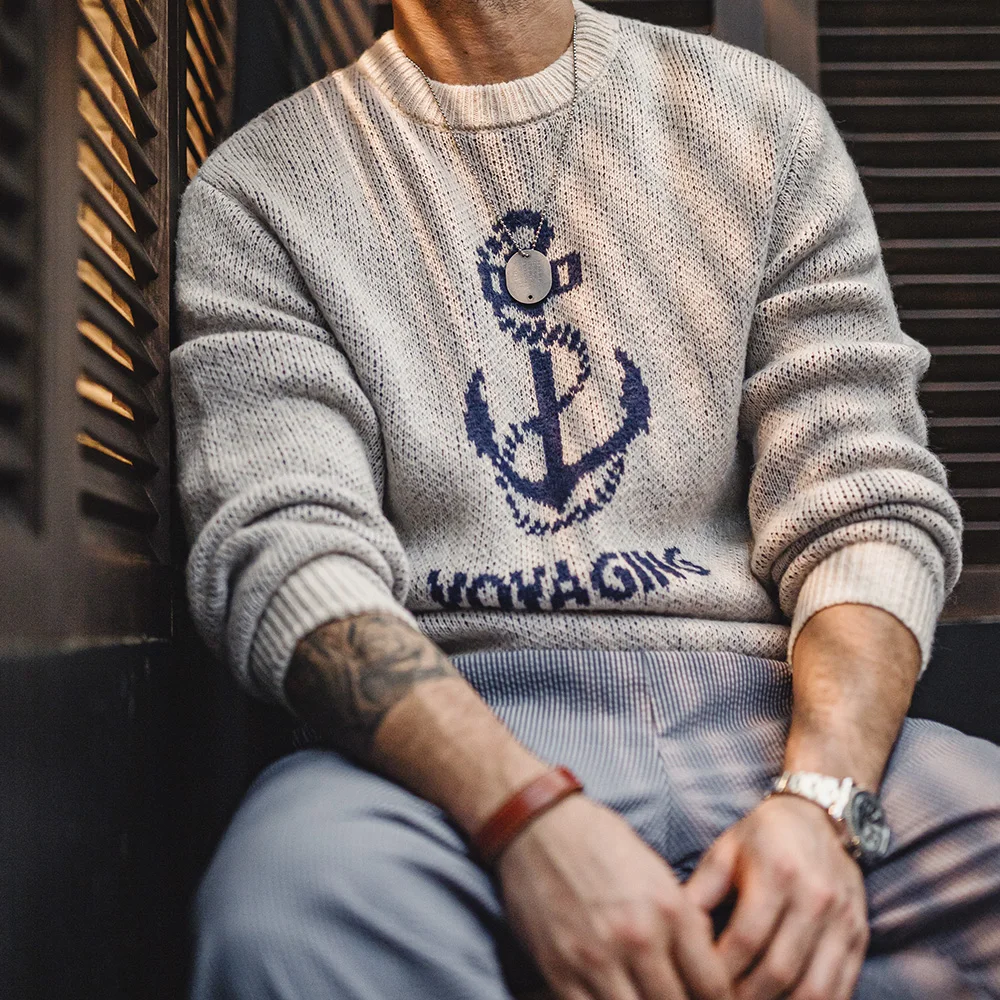
For those seeking versatile options, men’s cashmere cardigans offer excellent layering potential with both casual and formal wear, something synthetic alternatives rarely achieve with the same elegance.
From an environmental perspective, natural fibers like cashmere and wool generally offer better sustainability profiles than synthetic alternatives, though production methods significantly impact their overall footprint. Quality cashmere’s longevity also contributes positively to its lifetime environmental assessment.
Understanding Cashmere Quality: What Determines Value
Grading System Explained
The formal grading system for cashmere provides a standardized way to evaluate quality, with significant implications for performance and price:
Grade A cashmere features fibers under 16 microns in diameter and typically exceeding 36mm in length. This combination creates exceptionally soft fabric with minimal pilling tendency and superior durability. Grade A represents the gold standard in cashmere quality.
Grade B cashmere includes fibers between 16-19 microns with moderate length (typically 28-36mm). While still soft, it lacks the extraordinary softness of Grade A and may develop pills more readily over time.
Grade C cashmere contains fibers measuring 19-21+ microns with shorter lengths (often under 28mm). This grade feels noticeably less soft and is considerably more prone to pilling and shape distortion.
Fiber length directly impacts durability and pilling resistance. Longer fibers can be twisted together more effectively during spinning, creating stronger yarn that resists pilling. Meanwhile, fiber diameter (measured in microns) determines softness—the finer the fiber, the softer the resulting fabric feels against the skin.
The Significance of Ply
The term “ply” refers to the number of yarn strands twisted together to create the final thread used in knitting. This seemingly technical detail significantly affects a cashmere cardigan’s performance and value:
1-ply cashmere uses a single thread of yarn. It creates lightweight, less expensive garments ideal for warmer weather but typically offers less durability and warmth.
2-ply cashmere combines two yarns twisted together, providing the optimal balance of warmth, durability, and drape for most cardigans. This construction represents the most common and versatile option.
4-ply cashmere features four yarns twisted together, creating exceptionally warm, substantial garments with maximum durability and premium pricing. These heavier pieces excel in colder climates but may feel too warm for milder conditions.
Higher ply counts generally indicate greater quality and durability, but they also come with corresponding price increases. The additional material and more complex manufacturing process contribute to this higher cost.
Construction Quality Markers
Beyond the raw material quality, construction details significantly impact a cashmere cardigan’s performance and longevity. Quality indicators include:
- Even, tight stitching throughout the garment
- Reinforced seams at stress points
- Consistent color with no fading or streaking
- Well-attached, quality buttons or closures
- Proper finishing along edges and openings
- Smooth, even texture without bumps or irregularities
Long cashmere cardigans particularly benefit from superior construction techniques that help them maintain shape despite their greater weight and length.
Ethical Sourcing Considerations
The source and harvesting methods for cashmere affect not only the quality of the final product but also its ethical profile. Traditional combing of molting goats produces higher quality fibers than sheared cashmere, while also being more humane for the animals.
Sustainable cashmere production practices focus on preventing overgrazing and ensuring proper animal welfare standards. These organic cashmere clothing ethical options often result in superior fiber quality while also addressing environmental and ethical concerns that many consumers prioritize.
Responsible producers implement land management practices that prevent desertification and maintain grassland health. These practices not only support ethical considerations but often correlate with higher quality raw materials.
Essential Care Guide: Protecting Your Investment
Proper Washing Techniques
Appropriate cleaning methods directly impact your cashmere cardigan’s lifespan and appearance:
- Always check the garment’s care label first for specific instructions
- Hand washing is generally safest using lukewarm water (never hot)
- Use a mild detergent specifically formulated for wool or cashmere
- Gently squeeze the soapy water through the fabric—never wring or twist
- Rinse thoroughly with clean, lukewarm water until all soap is removed
- Press (don’t wring) to remove excess water
For those who prefer professional care, dry cleaning is a safe option, though less frequent cleaning extends garment life regardless of method. Washing frequency should be minimized—typically after 3-5 wears or when visibly soiled.
Correct Drying Methods
Proper drying techniques prevent stretching and shape distortion:
- Gently press (never wring) the garment with a clean towel to remove excess moisture
- Lay the damp cardigan flat on a fresh dry towel
- Reshape carefully to original dimensions while damp
- Allow to air dry completely away from direct heat sources or sunlight
- Flip occasionally to ensure even drying
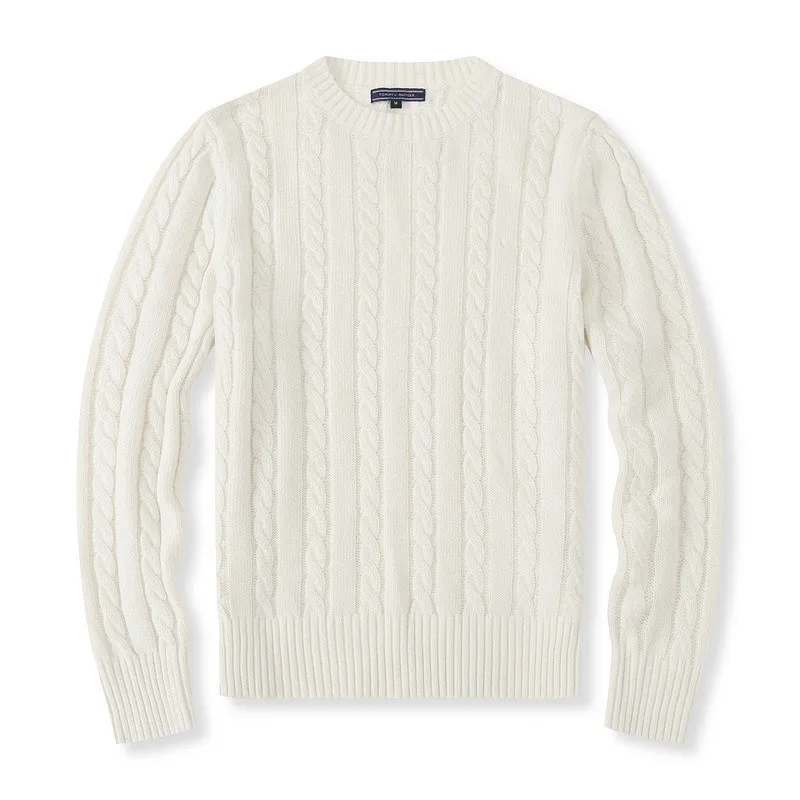
Storage Solutions
Protecting cashmere between wearings and seasons prevents damage and extends its lifespan:
- Always clean before extended storage to remove body oils and food particles
- Fold cashmere rather than hanging to prevent stretching
- Store in breathable containers (cotton bags or acid-free tissue paper)
- Add cedar blocks or lavender sachets as natural moth deterrents
- Avoid plastic storage, which can trap moisture and encourage mildew
- Store in a cool, dry place away from direct sunlight
Addressing Common Issues
Even with proper care, cashmere may occasionally develop issues that require attention:
Pilling: Remove pills gently using a cashmere comb or sweater stone with light, directional strokes. Electric pill removers designed for delicate fabrics also work well when used carefully.
Snags or Holes: Address small holes promptly with professional repair or careful hand-mending using matching cashmere yarn. For significant damage, professional reweaving may be necessary.
Refreshing Between Washes: Airing cashmere outdoors (away from direct sunlight) for a few hours can naturally eliminate odors without washing.
Understanding these care practices is essential for layering tips with cashmere cardigans to maintain their appearance through regular use.
Making Your Decision: Is a Cashmere Cardigan Right for You?
Personal Lifestyle Assessment
Determining whether a cashmere cardigan represents a worthwhile investment requires honest evaluation of your lifestyle and needs:
Consider your typical environments: If you spend most days in climate-controlled offices, cashmere’s temperature-regulating properties offer significant benefits. For those working outdoors in harsh conditions, more rugged materials might be more practical.
Evaluate your wardrobe habits: Do you tend to wear favorite pieces frequently, or do you prefer constant variety? Cashmere delivers better value for those who wear their key pieces regularly rather than collecting many rarely-worn items.
Assess your style consistency: Cashmere cardigans deliver maximum value for those with relatively stable style preferences rather than those who follow rapidly changing trends.
Reflect on your clothing care habits: Are you willing to provide appropriate care for premium garments? Cashmere requires more attention than synthetic alternatives.
- Price range: $102.02 through $109.37 Select options This product has multiple variants. The options may be chosen on the product page
Cashmere Wool Cardigans, Women's Cashmere Cardigans
Price range: $92.23 through $92.45 Select options This product has multiple variants. The options may be chosen on the product pageCropped Cashmere Cardigans, Women's Cashmere Cardigans
$86.75 Select options This product has multiple variants. The options may be chosen on the product pageWomen's Cashmere Cardigans, Women's Cashmere Turtlenecks
$87.89 Select options This product has multiple variants. The options may be chosen on the product pageLong Cashmere Cardigans, Women's Cashmere Cardigans
$82.38 Select options This product has multiple variants. The options may be chosen on the product page- Price range: $83.49 through $101.59 Select options This product has multiple variants. The options may be chosen on the product page
Budget Considerations
While cashmere represents a significant upfront investment, calculating its true cost requires considering its complete lifecycle:
Cost per wear calculation: A $300 cashmere cardigan worn 30 times annually for 10 years equals $1 per wear—potentially more economical than repeatedly replacing lower-quality alternatives.
Quality tiers exist: Entry-level pure cashmere begins around $150-200, while premium options from luxury brands can exceed $1,000. The sweet spot for quality relative to price typically falls in the $250-500 range from reputable specialty retailers like Estate Cloth.
Strategic purchasing: Shopping end-of-season sales can yield significant savings on premium cashmere without quality compromises.
Exploring versatile cashmere cardigan styles can help maximize your investment by ensuring you select pieces with maximum styling potential.
Practical Scenarios
Certain situations particularly highlight cashmere’s value proposition:
Travel: Cashmere’s lightweight warmth, wrinkle resistance, and versatility make it ideal for packing light without sacrificing comfort or style.
Sensitive skin: Those with wool sensitivities often find cashmere completely comfortable, making it uniquely valuable despite its premium cost.
Professional environments: Contexts where subtle quality signaling matters benefit from cashmere’s understated luxury and refined appearance.
Transitional seasons: Spring and fall weather variations showcase cashmere’s temperature-regulating properties particularly well.
Cashmere Care Myths: Separating Fact from Fiction
Myth: “Cashmere always requires dry cleaning.”
Fact: Gentle hand washing with appropriate detergent is not only safe but often better for preserving cashmere’s softness than frequent dry cleaning, which can strip natural oils.
Myth: “Cashmere is too delicate for regular wear.”
Fact: Quality cashmere is surprisingly resilient when properly cared for. Many premium cashmere garments remain in excellent condition after decades of regular use.
Myth: “All pilling means poor quality.”
Fact: Even the finest cashmere will experience some initial pilling as shorter fibers work their way to the surface. Quality cashmere typically stabilizes after these initial pills are removed.
Myth: “You can’t fix cashmere once it’s damaged.”
Fact: Minor damage like small holes or pills can be effectively addressed through proper techniques or professional repair. Cashmere actually responds well to careful mending.
Myth: “Cashmere storage requires special equipment.”
Fact: While proper storage matters, simple solutions like clean cotton bags, acid-free tissue paper, and natural moth deterrents effectively protect cashmere without specialized equipment.
Is Cheaper Cashmere Ever Worth Considering?
The market offers cashmere at various price points, but significant quality differences typically exist between premium and budget options. True bargains in pure cashmere are rare—extremely low prices almost always indicate compromises in fiber quality, processing methods, or construction.
Common practices in budget cashmere include:
– Using shorter, thicker fibers (Grade C) that feel less soft and pill more readily
– Incorporating lower percentages of cashmere in unmarked blends
– Applying chemical softeners that create initial softness but wash out quickly
– Using looser knitting techniques that reduce material costs but compromise durability
That said, certain situations might justify considering more affordable cashmere:
– Cashmere blends (clearly labeled with percentages) can offer reasonable performance at lower prices for less frequent wear
– Entry-level pure cashmere might make sense for trying the material before investing in premium pieces
– Vintage or secondhand premium cashmere often offers excellent value
When evaluating lower-priced options, examine the garment carefully for even knitting, substantial weight, and clear fiber content information. Be particularly skeptical of prices below $100 for supposedly pure cashmere—these almost invariably involve significant quality compromises.
In most cases, investing in one premium cashmere piece delivers better long-term value than multiple lower-quality alternatives that will require more frequent replacement.

